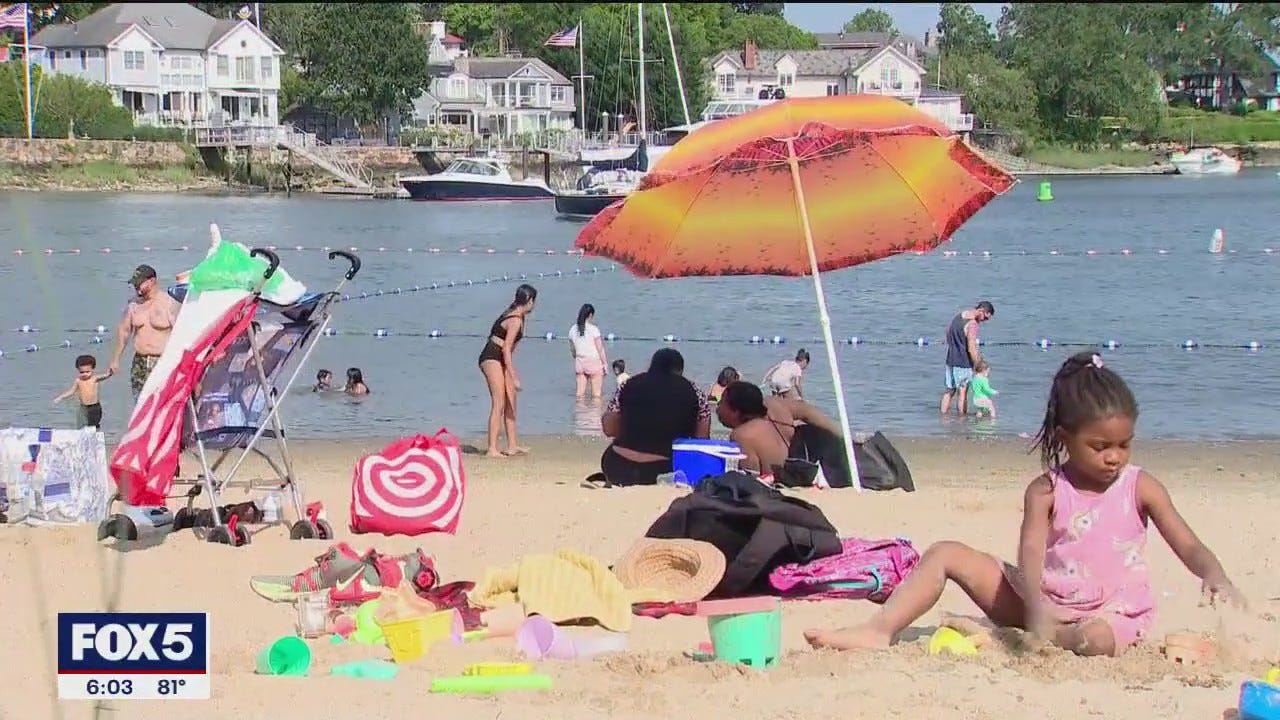What's the difference between an extreme heat watch and warning?

States across the Central and Eastern U.S. are under extreme heat watches and warnings as the areas are facing "dangerous heat," according to the National Weather Service.
"Though record high temperatures are expected in the coming days, the duration of the heat, as demonstrated by the numerous record warm morning lows, will make this period especially oppressive," the National Weather Service posted on X June 20.
The weather service has issued extreme heat warnings for areas in over a dozen states, as they face the highest temperatures of the year so far. It also issued extreme heat watches in several states and Washington D.C., according to an advisory issued to the agency's website.
Here's everything you need to know about the heat wave.
Which states are under an extreme heat warning?
Portions of the following states have been placed under an extreme heat warning, according to the National Weather Service:
- Indiana
- Iowa
- Massachusetts
- Michigan
- Minnesota
- Missouri
- Nebraska
- New York
- Ohio
- Pennsylvania
- Rhode Island
- South Dakota
- Vermont
- West Virginia
Difference between extreme heat watch and extreme heat warning
Areas where dangerous heat is possible are placed under an extreme heat warning and are asked to prepare in case it happens.
Areas where dangerous heat "is happening or about to happen" are placed under an extreme heat warning, according to the weather service.
While areas that are placed on a watch are asked to reschedule any planned outdoor activities, people in areas placed under warnings are told to avoid any heavy activity and direct sunlight.
How to stay safe during extreme heat
People facing extreme heat should do the following, according to NWS:
- Drink plenty of fluids
- Stay in an air-conditioned room
- Stay out of the sun
- Check up on relatives and neighbors
- Do not leave young children and pets in unattended vehicles
- Wear lightweight and loose-fitting clothing outdoors
- Limit strenuous activities to early morning or evening
Heat exhaustion and heat stroke
The extreme heat could negatively impact people's health.
"Heat-related illnesses increase significantly during extreme heat and high humidity events," according to the National Weather Service.
The following factors increase the possibility of a heat-related illness, according to the National Park Service:
- High humidity
- High elevation
- Strenuous activity
- Age: Infants, young children and people over 65 are more susceptible to heat illness
- Pregnancy
- Obesity
- Heart disease
- Poor circulation
- Fever
- Mental illness
- Dehydration
- Sunburn
- Prescription drug and alcohol use
What are the symptoms of heatstroke?
There are multiple forms of heat illnesses, but heatstroke is the deadliest and most dangerous, according to the NPS.
The following are symptoms of heatstroke, according to the Centers for Disease Control and Prevention:
- Body temperature of 103 degrees or higher
- Skins that is hot, red, dry or damp
- Fast, strong pulse
- Headache
- Dizziness
- Nausea
- Confusion
- Losing consciousness
In the case of a heatstroke, the CDC recommends people do the following:
- Call 911 immediately
- Move the person suffering from heatstroke to a cool location
- Lower the person's body temperature with a cool cloth or bath
- Do not give the person suffering from a heatstroke water or anything to drink
Julia is a trending reporter for Paste BN. Connect with her on LinkedIn, X, Instagram and TikTok: @juliamariegz, or email her at jgomez@gannett.com